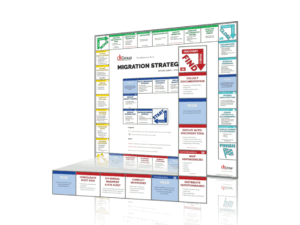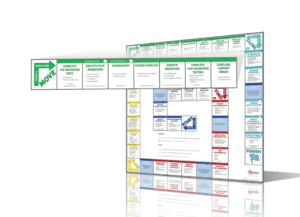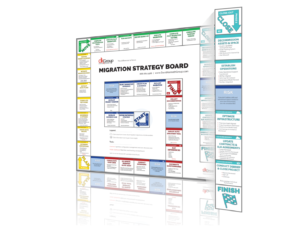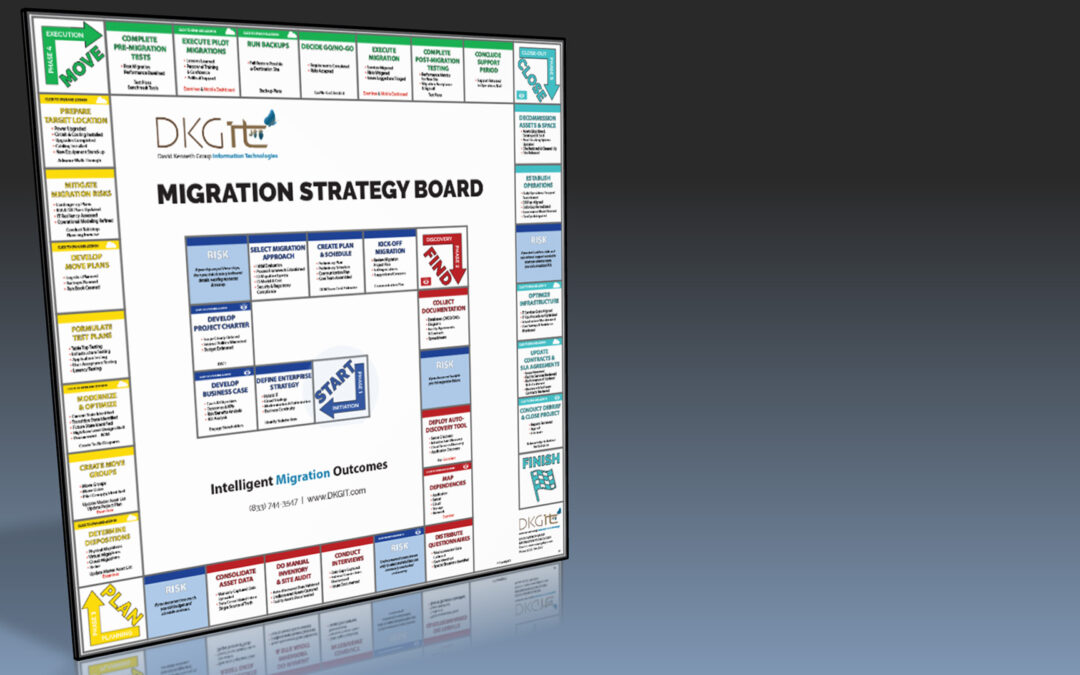BLOG: DKGIT’s Migration Methodology (DKGm) is a proven step-by-step process for planning and executing successful migrations of apps and infrastructure to a new location and/or the cloud. It is intentionally designed to support hybrid IT operating environments. It is organized into five phases and includes a baseline of more than 80 deliverables and two migration-specific toolsets. Below is a summary of each phase.
Five Methodology Phases
- Phase 1: Initiation
- Phase 2: Discovery
- Phase 3: Planning
- Phase 4: Execution
- Phase 5: Closeout

Phase 1: Initiation
The Initiation Phase launches the project and includes key objectives that lay the groundwork for success. It establishes the business case and project charter organizes the project team, and is where a high-level migration strategy begins to take shape.
Tips & Tricks
- Solid goals are key.
- Set realistic expectations.
- Enforce project priorities. They will be tested.
- Communicate early and often with stakeholders.
The people in your organization and your customers are the most critical component of your migration. Communicating a solid plan will build confidence in the project and help address organizational concerns.

Phase 2: Discovery
The Discovery Phase identifies and documents your physical, virtual, and cloud environment, inclusive of the application inventory, interdependencies, and cloud services. With a combination of auto and manual data collection methods, discovery identifies critical data at the business, application, and infrastructure layers.
Tips & Tricks
- Don’t get stuck in discovery. If you document too much, you risk budget and schedule overruns.
- Different situations require gathering different information. For example, some undocumented assets may only be known by select stakeholders.
- Do not forget to gather business information, i.e., TCO, ROI, SLAs, service windows, refresh.
Organizations discover undocumented IT assets and dependencies 100% of the time and typically experience a +20% variance between what is known and what is discovered.

Phase 3: Planning
The Planning Phase is where the team determines workload and application dispositions as well as performs move-group planning. The project plan and schedule evolve into the master plan for execution. During this phase a clear and consolidated picture of what will be necessary during the execution phase takes shape.
Tips & Tricks
- Creative timing and groupings can simplify or reduce costs.
- Procurement is often a critical path, especially for new circuits.
- Have a fallback window and a plan B. Do not be afraid to use them.
Smart simplicity and creative problem solving can resolve challenges—like unsupported assets, security gaps, and more—without disrupting the timeline or the budget.

Phase 4: Execution
A migration is 75 percent planning and 25 percent execution. Thorough planning and preparation are your best protection against migration risks. Pre-migration testing, pilot migrations, contingency rollback planning, and detailed cutover run books support the final go or no-go decision as the gatekeeper for execution readiness. Post-testing, acceptance criteria, and solid issue tracking ensure you do not walk away from the scene with a hidden bomb still ticking.
Tips & Tricks
- Bigger moves can be easier than small ones.
- Migrate from steady-state to steady-state.
- Do not underestimate the test planning effort.
Triggering your contingencies and maintaining control can make a critical difference when the plan does not go as planned.

Phase 5: Closeout
After completing the complex undertaking of migration, the Closeout Phase can catch organizations by surprise with hidden risks and expenses, and it can take longer than anyone expects.
Tips & Tricks
- If the disaster recovery of primary critical systems is not working well, now is the time to correct it while the right team is assembled.
- Absorb valuable information gained from the migration project into the organization and tools.
- Publish lessons learned as a record for future migration projects.
Done right, significant value and expense can be saved in the closeout phase.
The Bottom Line About Migrations of Any Type
A migration can fundamentally transform how you deliver services and yield an attractive return on investment for IT and business operations. But, you need a rock-solid migration plan, tailored to your operating environment, to get you there.
A methodology specific to migrations will help you create the plan and achieve the transformative results you seek while ensuring operational stability.

